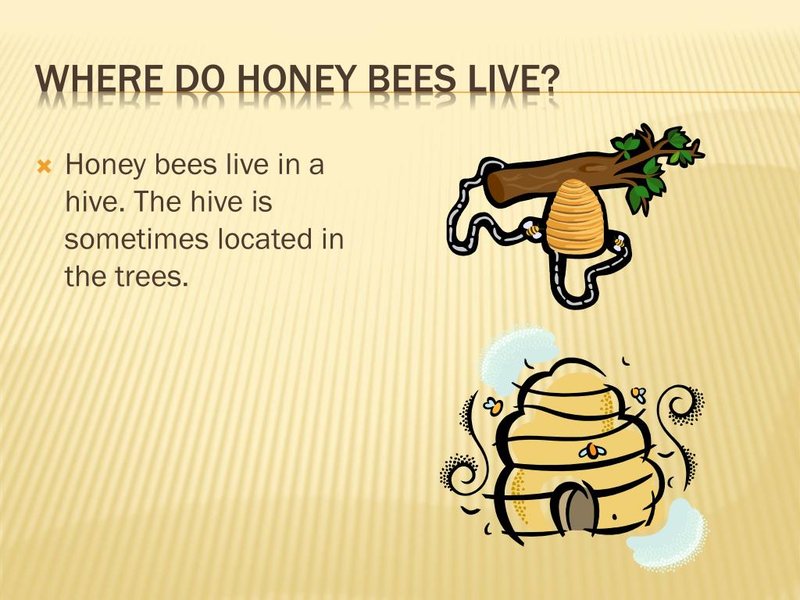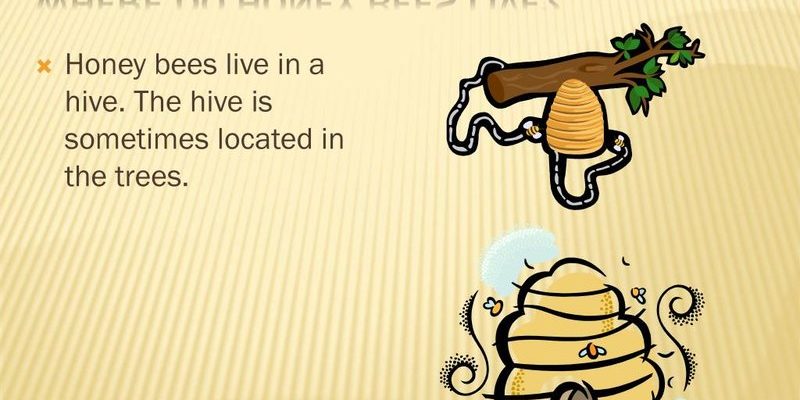
You may think of honey bee colonies as tiny bustling cities. Each colony is a well-organized community, complete with workers, drones, and a queen. The way they live and adapt not only keeps them alive but also helps our environment. By understanding where honey bees live and how they adjust to changes, we learn more about their crucial role in pollination and the ecosystem.
Natural Habitats of Honey Bees
Honey bees primarily make their homes in hollow trees, cavities, and sometimes even in human-made structures. These locations are essential for the bees since they provide protection and a stable environment for their colonies. Wild honey bees tend to nest in places that are sheltered from the weather and predators.
In forests or fields, you’ll often find honey bee colonies in old tree trunks. The inside of a tree can keep the bees safe from harsh winds, rain, and extreme temperatures. It’s like a cozy apartment for them! When these bees scout for new nests, they look for sites that have enough space and are high off the ground, reducing the risk of predators.
Interestingly, honey bees can adapt to living in various environments around the world. They are found almost everywhere except in the most extreme climates. From the tropical rainforests of South America to the temperate zones of Europe, they adjust their behaviors and lifestyles accordingly, showcasing their incredible resilience.
The Structure of a Honey Bee Colony
A honey bee colony is made up of three main types of bees: the queen, the workers, and the drones. Each has its own role and contributes to the overall wellbeing of the colony. The queen, the heart of the colony, is responsible for reproduction. She can lay thousands of eggs each day, ensuring the colony grows.
The worker bees do all the heavy lifting. They gather nectar, forage for pollen, clean the hive, and protect the colony. These workers are female bees and are quite industrious. It’s interesting to note that they even regulate the temperature inside the hive by fanning their wings and using water to cool it down—talk about teamwork!
Drones are the male bees, and their primary role is to mate with a queen. Once mated, they lead a pretty short life—they don’t hang around the hive much after that. In a way, each type of bee plays a part in a grand scheme, almost like characters in a play, all working together harmoniously.
How Honey Bees Adapt to Climate Changes
One of the impressive things about honey bees is how they adapt to changes in climate. If the weather becomes too cold, they form a cluster inside the hive to keep warm. They generate heat by vibrating their wing muscles, which keeps the colony cozy during chilly winters. Just imagine a bunch of them hugging together for warmth—sweet, right?
When it comes to changes in food availability, honey bees are also clever. They can adjust their foraging patterns based on what flowers are blooming and when. If a certain type of flower is scarce, they will search for others to maintain their food supply. This flexibility is crucial for their survival and thriving.
You might be wondering about their ability to sense changes in the environment. Honey bees can detect temperature, humidity, and even the presence of predators. This keen sensitivity allows them to respond quickly, ensuring the colony remains safe and nourished despite challenges.
The Role of Honey Bees in Pollination
Honey bees are vital to pollination, which is a fancy term for helping plants reproduce. When they gather nectar, they inadvertently transfer pollen from one flower to another. This process allows plants to grow fruits, seeds, and vegetables. It’s like a natural matchmaking service for plants!
Without honey bees, many crops would struggle to produce a good yield. Think about your favorite fruits, like apples and strawberries—many of them rely on honey bees for pollination. In fact, it’s estimated that honey bees are responsible for pollinating about one-third of the food we eat.
Their efficiency lies in how they can visit dozens of flowers in a single trip. They are like little pollination machines, tirelessly working to ensure the beauty of nature and the continuation of various plant species. By supporting honey bee populations, we’re not just helping them; we’re assisting the entire ecosystem.
Challenges Honey Bees Face
Unfortunately, honey bees are facing several challenges today that threaten their survival. Pesticides, habitat loss, and climate change are a few of the biggest culprits. Many pesticides can harm bees, affecting their navigation and foraging abilities. This leads to decreased populations and, ultimately, fewer bees to pollinate plants.
Habitat loss is another significant issue. As urban areas expand and natural areas are developed, bees lose their nesting sites and food sources. They thrive in environments with plenty of wildflowers and trees, so when those are removed, their populations suffer.
Climate change is also shifting the blooming times of flowers, which can cause mismatches between when bees are active and when flowers are available. It’s like a dance where the partners are no longer in sync. This not only affects food supplies for bees but can have a cascading impact on our food systems as well.
How to Support Honey Bees
You might be wondering how you can help support honey bees. Thankfully, there are several ways to make a difference, and it’s easier than you might think! Here are a few simple actions you can take:
- Plant Wildflowers: Grow a variety of bee-friendly flowers in your garden. Bees love colorful blooms with plenty of nectar and pollen.
- Avoid Pesticides: Opt for natural pest control methods to keep your garden and plants healthy without harming bees.
- Provide Water: Set up a small bee bath with shallow water and pebbles. This gives bees a safe place to drink without the risk of drowning.
- Educate Yourself and Others: Share what you learn about honey bees and their importance. Knowledge spreads awareness and supports conservation efforts.
Being proactive about supporting honey bees not only helps them survive but also enhances your own garden and local ecosystem. Who knew that planting flowers could make such a big impact?
Honey bees lead complex lives filled with fascinating adaptations that allow them to thrive in various environments. Whether nestled in a cozy tree trunk or buzzing through a colorful garden, they play vital roles in pollination and keeping our ecosystems balanced.
By learning where honey bees live and how they adapt, we gain a deeper appreciation for these remarkable creatures. Taking steps to protect and support them ensures that our food systems remain intact and that we continue to enjoy the beauty of nature around us. So the next time you see a honey bee at work, remember: they’re not just buzzing aimlessly—they’re busy ensuring a world full of life and color.

